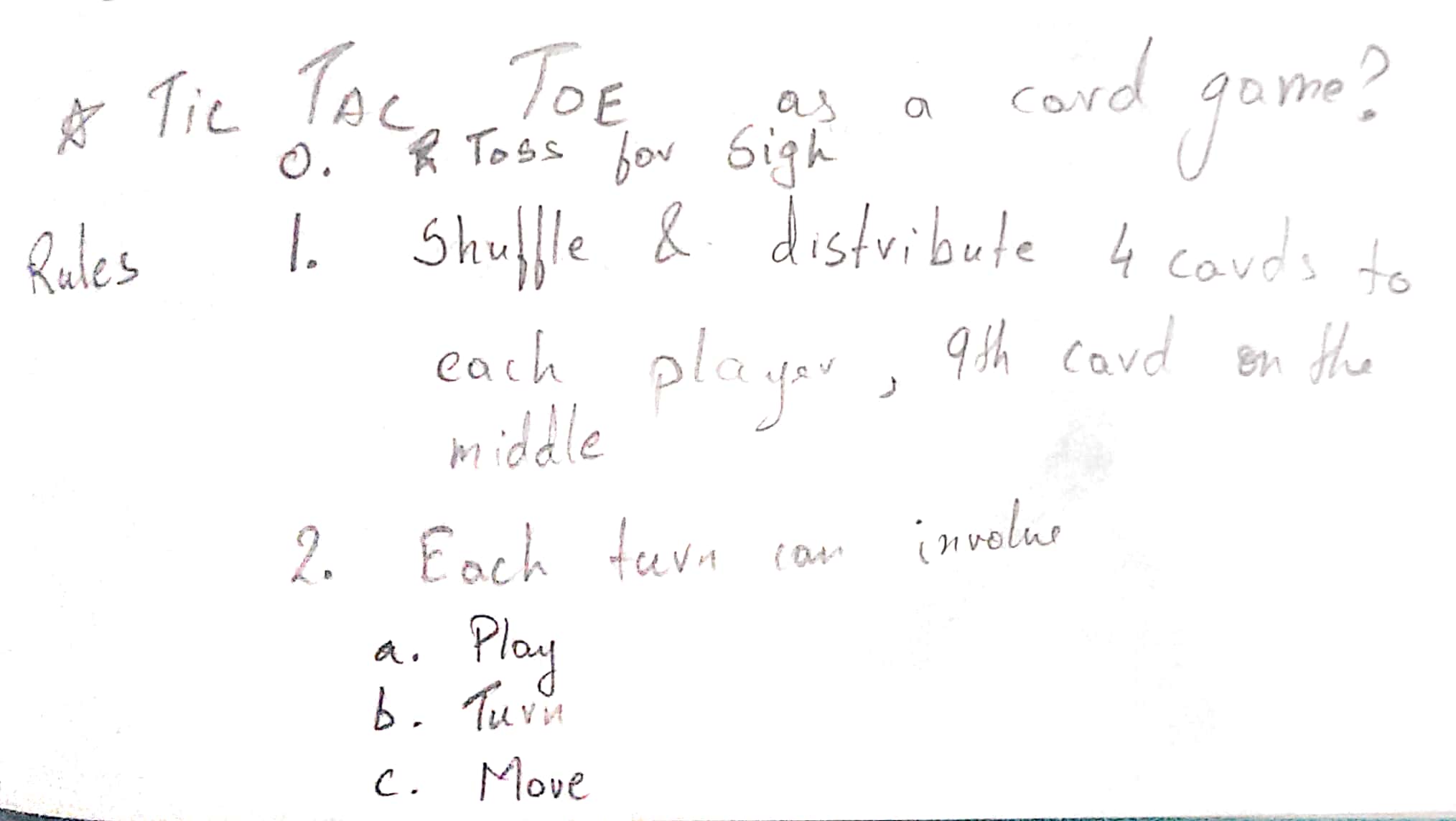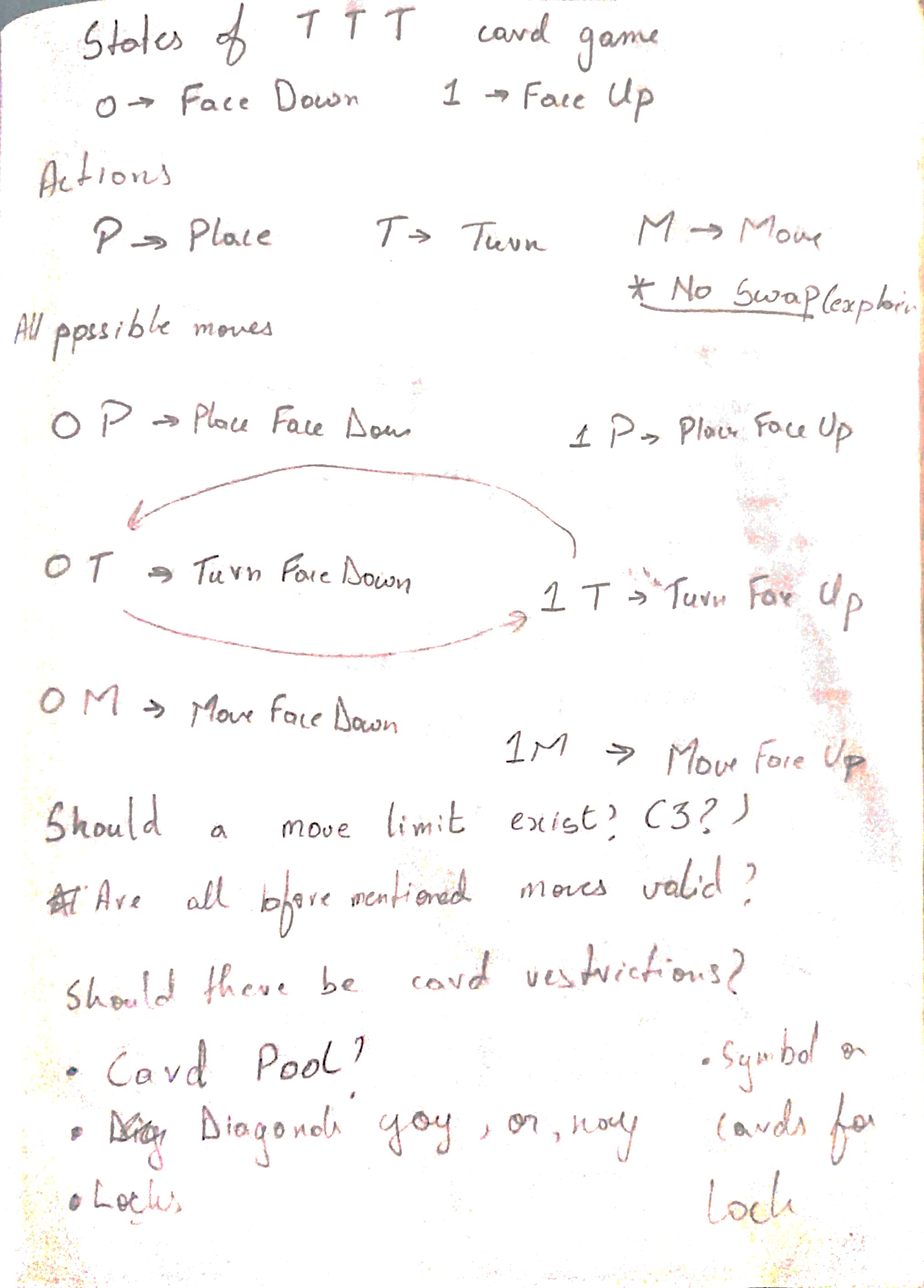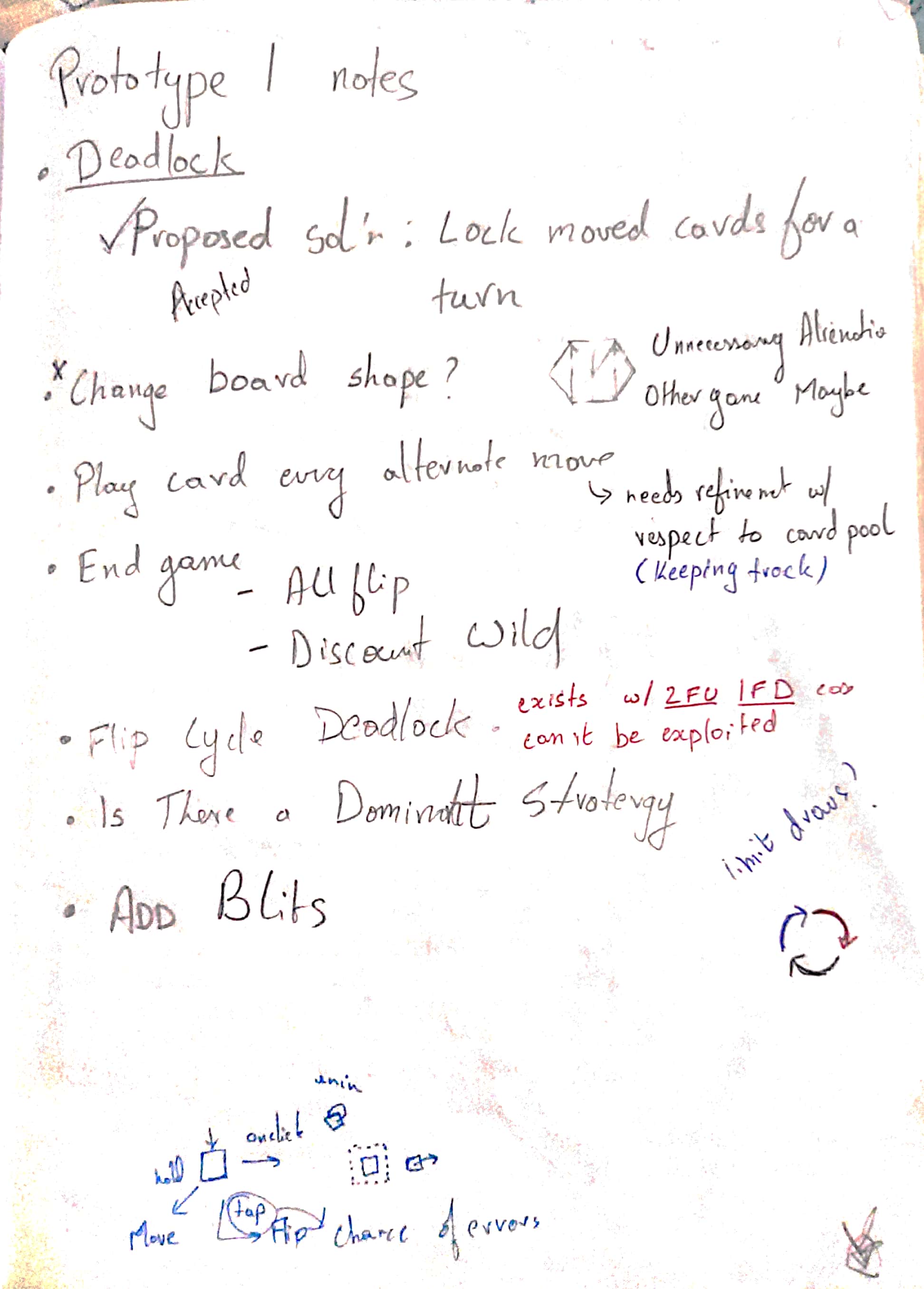Tac Tic Toe
A strategy and puzzle based reimagination of Tac Tic Toe

Introduction
Tac Tic Toe is a card/tile-based reimagination of the classic game tic tac toe. This idea came into existence during my study of game design when I had developed an interest in board and card games owning to their deep, elegant and emergent design. I was eager to make a card game of my own (I did make one for a game jam but that didn’t really work out :P) but I wanted to start small. As general occurrence in game design, complexity increases exponentially with scale. So I decided to take a pre-existing game and reimagine it as a card/tile game.
My Role
This project was conducted in my indivisual capacity. I would like to thank friends who assisted in playtesting and Yugvir Parhar for helping illustrate the prototype.
Research
I studied a myriad of card and tile games, Monopoly Deal, Sushi Go, Magic the Gathering, Dutch Blitz to name a few. Some of my key findings were
- Emergent Gameplay: Emergence is the quality of having meaning resultant actions with respect to an operation oriented action. If a gameplay element is a noun, emergence is the property dictating how many verbs it can be associated with. All the card games had high emergence with one action having multiple implications, leading to spontaneous events. Think of how chess pieces can attack and defend in a single move as an example. Emergence is elegant because it allows for a large number of gameplay elements without having the players experience cognitive overload.
- Surprises: Who doesn’t love a good surprise. When done well, it adds a range of emotions and experiences to the game. Most card games try to incorporate elements of surprise in their design, prominent examples being “trap” cards that subvert player expectations and can at times turn the tides of the game.
So now I had to decide on a game to reimagine. I wanted to keep the games as simple as possible to focus exploration of the aforementioned ideas. Ideas of Rock Paper Scissors crossed my mind but I went with tic tac toe because it was one which could really use the improvement.

Challenges
- The biggest challenge of Tic Tac Toe is that it’s a solved game. If you know the steps, you either always win or draw. That eliminated a major fun factor from the game, so adding chaos and uncertainty was a key factor.
- Simplicity. Tic Tac Toe is very simple, which honestly is a good thing in most regards, but the simplicity here is shallow leading to a lack of interesting elements. I wanted to add a certain degree of depth to enable dynamic behavior.
Setting up the game
My earliest prototypes had the following foundational rules which are still present or slightly altered:
- Each symbol exists as a card/tile.
- The card can exist in 2 states, face up or face down.
- There exists a single special “wild” card that can function as both a X or an O.
- At the beginning of each game, each player randomly chooses either X or O, then the cards will be shuffled and distributed 4 to each player, the 9th remaining card will be placed on the center of the grid, face down
- There are 3 possible actions with each card:
- You can play a card from your hand, face up or down.
- You can flip a played card, face up or down.
- You can move a played card, irrespective of it’s facing to an adjacent, but not diagonal, spot, provided it is empty.
- To win a match, you have to get 3 symbols in a row, horizontally, vertically or diagonally, but they HAVE to be face up. If both players make a match simultaneously or fail to make a match, it is considered a draw.

Implications
Some key features and implications are as follows:
- The player may, and is very likely to receive cards of the opponent’s symbol, so when and how to use them leads to interesting mental battles and strategies
- Since the cards have to be lined up face up, it is possible for players to flip an opponent’s card, or just move it out of order to prevent their win. This, in turn, was an interesting mechanic to turn griefing into a gameplay element. Players are working not only to strengthen their position, but also to weaken the opponent’s position.
- The presence of the wild card adds a good dose of the aforementioned surprise, it was often seen that a player would play a wild to strengthen their position but then the opponent would take advantage and use the wild to secure their own victory.
- This fact, along with the ability of the cards to be used face down contributed to the much-needed surprise in the game. Players could set their "traps" this way, trying to subvert the opponent's expectations. Another interesting occurrence was when players would forget their own played cards. In that sense, the game also tests a person’s ability to keep a mental track of the elements on the field, adding a (albeit optional) factor of skill to the game.
Playtesting
Now was the time for the designer’s worst nightmare, playtesting. I made the prototype with some old poster cut-outs and would carry them out everywhere I went, pulling them out whenever and wherever I got the chance. Even though I didn’t expect a lot of interest from people in a tic tac toe reimagination, I noticed, to my pleasant delight, that once they did start playing, they were quite absorbed into the game. Yet the design wasn’t perfect and the playtest allowed me to discover and weed out a plethora of issues.

-
Hoarding
Players would hoard their cards, never playing the opponent’s symbols and only using the other available moves, that is moving and flipping. The players had too much freedom. To eliminate this issue, a new rule was introduced, the player MUST play a card if they didn’t play one in the previous turn (utilized for a flip or move). This added constraint made players value their resources and consider their options more delicately. -
Deadlock
Players would keep flipping or moving the same card over and over again. To counter this, a lock was introduced. A card would be locked for 1 turn after any action performed on it (play, move, flip). This rule in conjunction with the previous rule eliminated said issues. -
End Game
The end game was rather confusing and would mostly lead to draws as there would be fewer move opportunities as the game progressed. This was solved by the addition of the following rule. At the end of the game, all the cards are flipped face up and the “wild” is eliminated. If only one player has a match, they win, otherwise, it is a draw. This enabled another strategy wherein the cautious players would tackle it more like a puzzle, aiming towards the long term victory instead of an instant win.
And with that, the game reached the position in which it is now.
Future Work
Currently working on a digital version of the game.